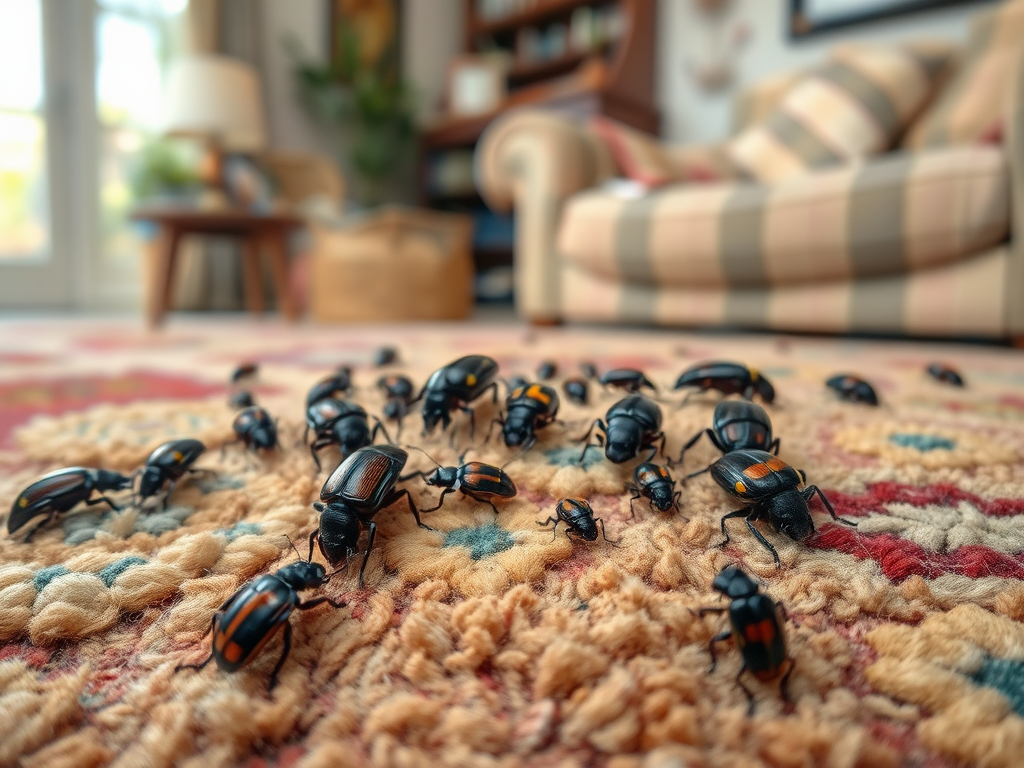For homeowners and renters alike, the unsettling thought of finding pests lurking in their spaces can be alarming. Two common culprits often mistaken for each other are bed bugs and carpet beetles. Understanding the distinctions between these two pests goes beyond mere appearances; it encompasses their behavior, habitats, and the signs they leave behind. A thorough grasp of their unique characteristics not only helps in accurate identification but is essential for implementing effective control measures. Whether you’re experiencing unusual bites at night or noticing damage to your fabrics, knowing who the real pest is can save you time, money, and stress. In this guide, we’ll delve deep into the differences that separate bed bugs from carpet beetles.
Bed bugs are notorious for their resilient nature and ability to thrive in various environments. They primarily feed on the blood of humans and animals, making bedrooms their preferred habitat. On the other hand, carpet beetles feast on natural fibers and other organic materials. This fundamental difference in diet sets the stage for understanding the impact each pest can have on your household. Let’s explore the features that distinguish bed bugs from carpet beetles, from their physical attributes to their behavior patterns.
What are Bed Bugs?

Bed bugs are small, flat, wingless insects known scientifically as Cimex lectularius. These pests are characterized by their proclivity for hiding in crevices, making them hard to spot until an infestation has occurred. With flat, oval bodies that allow them to nestle into seams and cracks, bed bugs are adept at going undetected. They pose a significant challenge to homeowners due to their nocturnal feeding habits, primarily when we are most vulnerable during sleep. Their bites can result in discomfort ranging from mild irritation to severe allergic reactions. Knowing their characteristics can make a notable difference in identifying a potential infestation early.
- Size: Adult bed bugs measure about 4-5 mm long.
- Color: Their bodies vary from light brown to reddish-brown, often darkening after a blood meal.
- Shape: Oval and flattened, which aids their ability to hide effectively.
What are Carpet Beetles?

Carpet beetles, belonging to the family Dermestidae, are another type of household pest that may cause confusion for those dealing with infestations. Unlike their blood-sucking counterparts, carpet beetles primarily consume organic materials, including wool, silk, and fur. They can be found in various areas throughout the home, including closets, near windows, and under furniture, particularly where pet hair accumulates. Their larvae, often referred to as “woolly bears,” are responsible for the damage to fabrics. Adult carpet beetles can fly and are often mistaken for other small flying insects. Learning to identify these pests can help mitigate damage before it escalates.
- Size: Adult carpet beetles are about 2-5 mm long.
- Color: They typically feature a mix of black, white, and orange or yellow markings, giving them a speckled appearance.
- Shape: Round and fuzzy, which can make them appear more harmless compared to bed bugs.
Behavioral Differences
The behavioral patterns of bed bugs and carpet beetles are starkly different, which helps in their differentiation. Bed bugs are primarily attracted to warmth and carbon dioxide emitted by humans during sleep. Thus, they tend to stay close to their food sources, often hiding in beds, mattresses, and couches. Unlike them, carpet beetles can often be found scuttling around during the day and may even fly, making them more visible. Understanding these behaviors can provide critical insights into not just identifying but also preventing infestations in the future. This is particularly important for homeowners looking to implement effective pest control measures.
| Feature | Bed Bugs | Carpet Beetles |
|---|---|---|
| Feeding Habits | Blood feeders (humans and animals) | Feed on natural fibers (wool, silk) |
| Preferred Habitat | Mattresses, furniture, bedding | Closets, carpets, fabrics |
| Signs of Infestation | Blood stains, bites, fecal spots | Damaged fabrics, shed skins, holes |
Signs of Infestation
Recognizing the signs of an infestation is crucial for prompt action against either pest. Bed bugs often leave noticeable marks and evidence of their presence. Here’s a list of common indicators associated with bed bug infestations:
- Blood stains or dark spots on bedding and mattresses.
- Itchy, red welts on exposed skin, particularly after sleeping.
- Small, dark fecal spots on sheets or flammable materials.
In contrast, carpet beetles have a different set of signs that indicate their presence:
- Deterioration of fabrics and carpets.
- Shed larvae skins discovered near food sources.
- Small holes in wool and linen materials.
How to Prevent Infestations
Taking proactive measures can significantly reduce your chances of experiencing infestations from either bed bugs or carpet beetles. For bed bugs, it is recommended to regularly inspect your sleeping areas and keep luggage off the bed while traveling. Incorporating mattress encasements can also add a layer of protection. On the other hand, preventing carpet beetles requires a focus on cleanliness and storage. Frequent vacuuming, particularly in corners and hidden spaces, can deter these pests. Storing seasonal clothing in sealed containers is another effective strategy.
- Inspect and clean bedding regularly.
- Avoid bringing second-hand items into your home without inspection.
- Implement a regular cleaning routine for carpets and upholstery.
Conclusion
Determining whether you are dealing with bed bugs or carpet beetles is a vital step in effective pest control. Each pest has its unique characteristics, behavior, and signs of infestation that can dramatically affect your home. By understanding these differences, you can take the necessary steps to prevent and manage infestations before they cause serious damage or discomfort. Regular inspections, combined with proactive measures, can help keep both pests at bay and ensure the comfort of your living space.
Frequently Asked Questions
- What is the main difference between bed bugs and carpet beetles? Bed bugs feed on blood and are typically found in bedrooms, while carpet beetles consume natural fibers and can inhabit various areas of your home.
- How can I tell if I have bed bugs or carpet beetles? Look for blood stains and bites (indicative of bed bugs) versus damages to fabrics and shed skins (indicative of carpet beetles).
- Are bed bugs dangerous to my health? While bed bugs do not transmit diseases, their bites can lead to itching and allergic reactions.
- Can I treat bed bugs and carpet beetles myself? DIY methods exist for both, though severe infestations should prompt consultation with pest control professionals.
- How do I prevent a carpet beetle infestation? Regular cleaning, vacuuming, and proper storage of clothing are essential preventive measures against carpet beetles.
